What Is the Best Direction for Solar Panels to Face? My Findings
Solar power has emerged as one of the most popular renewable energy sources worldwide. More homes and businesses are installing photovoltaic panels each year to generate clean electricity from sunlight. However, solar panels can only convert sunlight into energy efficiently when they are pointed in the optimal direction.
Properly positioning solar panel orientation is key to maximizing productivity over the life of a photovoltaic system. The direction that solar arrays face impacts how much sunlight reaches the panels, which determines energy output. By optimizing orientation, solar installers ensure systems will achieve the highest possible solar insolation and return on investment.
In this article I’m going to discuss the core considerations for determining the best direction to orient solar panels, including latitude and regional sun path, avoiding shading from obstacles, and equipment mounting options. With smart solar panel placement informed by your specific site and location, you can get the most out of your photovoltaic array. Keep reading to learn how to maximize solar panel efficiency through strategic positioning.
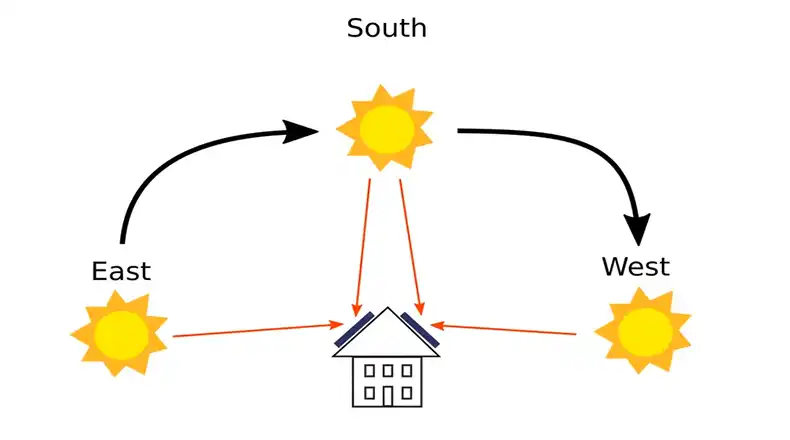
Best Direction for Solar Panels to Face
When installing photovoltaic solar panels for maximum energy production and efficiency, the optimal direction they should face is true geographic south if you are located in the northern hemisphere. By orienting panels to true south, the solar array will receive the highest amount of direct sunlight throughout the day and year.
This south-facing direction, as opposed to magnetic south, accounts for the apparent yearly movement of the sun across the sky dependent on latitude and seasonal variations. Panels angled precisely towards true south optimize solar capture as the sunlight strikes the surface most directly during the summer solstice, fall/spring equinoxes and even the lower-elevation sunlight path of the winter solstice.
Installers may recommend tilting solar panels from the horizontal plane or using single-axis or dual-axis solar trackers to further maximize exposure as the sun’s azimuth angle changes marginally east to west during the day. However, for most residential and commercial rooftop solar needs, proper true south orientation is adequate for peak power production.
Taking into account zoning regulations and building codes regarding solar installations, integrators can dial in the optimal southern direction through site surveys. So when evaluating photovoltaic solar energy for your location, consult experts on how true south-facing orientation with considerations for local shading and your roof pitch can best capture renewable solar power year-round.
Types of Solar Panel Based on Orientation
The orientation of solar panels refers to the direction they face in relation to the sun. There are several types of solar facing based on the cardinal directions:
1. South-Facing Solar Panels
- Advantages: Capture maximum sunlight throughout the day (in the Northern Hemisphere).
- Suitable for: Most regions in the Northern Hemisphere.
2. North-Facing Solar Panels
- Advantages: Ideal for the Southern Hemisphere, capturing maximum sunlight.
- Suitable for: Regions in the Southern Hemisphere.
3. East-Facing Solar Panels
- Advantages: Capture morning sunlight, beneficial for early energy production.
- Suitable for: Areas where energy demand is higher in the morning.
4. West-Facing Solar Panels
- Advantages: Capture afternoon sunlight, useful for later energy production.
- Suitable for: Areas where energy demand is higher in the afternoon.
5. Dual-Axis Tracking Systems
- Advantages: Adjust the tilt and direction of solar panels to follow the sun’s path throughout the day.
- Suitable for: Maximizing energy capture in locations with changing sun angles.
6. Fixed Tilt Solar Panels
- Advantages: Set at a fixed angle, usually optimized for the average sunlight conditions.
- Suitable for: Locations with consistent sunlight patterns.
7. Bifacial Solar Panels
- Advantages: Capture sunlight from both the front and rear sides, increasing overall efficiency.
- Suitable for: Various locations, especially those with reflective surfaces.
The choice of solar facing depends on factors such as geographic location, energy demand patterns, and available technology. It’s crucial to consider these factors to optimize the performance of solar panels and maximize energy production.
What is the Optimal Tilt for Solar Panels?
When installing a photovoltaic solar array, the ideal tilt angle for the panels to maximize energy production is typically equal to your geographic latitude. By matching the solar panel tilt to your specific latitude, the panels are angled closer to perpendicular as the sun crosses the sky over the course of the year.
For example, in Northern California at 38 degrees latitude, photovoltaic systems should be angled 38 degrees to account for the sun’s changing azimuth across summer, winter and fall/spring days. This latitude-matched tilt allows peak efficiency at solar noon and over the course of each day.
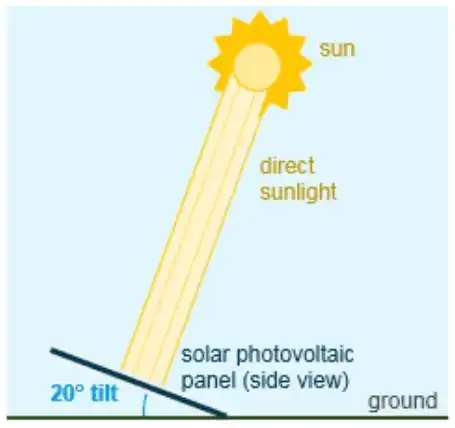
Figure-01: At lower latitudes, in states such as Hawaii and Arizona The sun is higher in the sky and Solar Photovoltaic Panels do not require much angle to receive direct sunlight.
This optimal tilt accounts for the sun’s position and seasonal movement dependent on location. Facing true south while tilted at latitude enables peak solar capture during the summer solstice, fall/spring equinox periods and even the lower-angle winter sunlight.
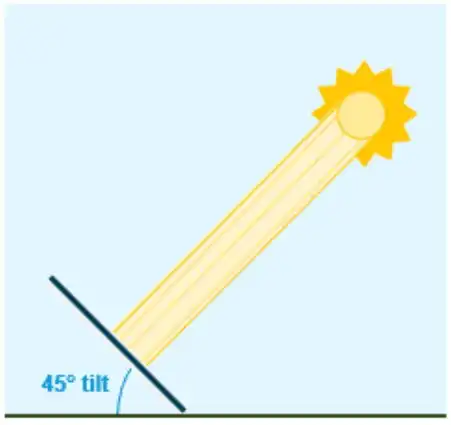
Figure-02: In higher latitudes, in states such as Oregon and Minnesota the sun is lower in the sky and Solar Photovoltaic Panels are often installed at greater angles in order to receive direct sunlight.
However, for regions with heavy snowfall or debris buildup, installers may recommend tilting panels at a sharper angle to promote self-clearing. Other exceptions include integrating solar arrays into the existing roof pitch and orientation based on zoning codes for your area.
While complex to calculate manually, professional photovoltaic installers have the expertise to survey your specific site and recommend the ideal system tilt for maximum solar energy production. Proper solar panel angle matched to latitude optimizes renewable power generation year-round.
So when planning your solar array, consult recommended tilt specs from reputable PV pros, and remember for rule-of-thumb latitude-based solar panel angling, latitude = tilt for greatest sunlight capture.
Optimizing Solar Panel Angles Across Seasons
The sun’s position in the sky changes throughout the year based on Earth’s tilted axis and seasonal orbit. This impacts the optimal tilt angle for solar panels to best capture sunlight.
During winter in the northern hemisphere, the sun follows a lower arc across the southern sky. Tilting panels at a steeper angle than latitude can maximize solar collection on short winter days.
Conversely in summer, the sun tracks higher overhead, meaning an angle slightly less than latitude brings more direct sunlight exposure to the photovoltaic cells.
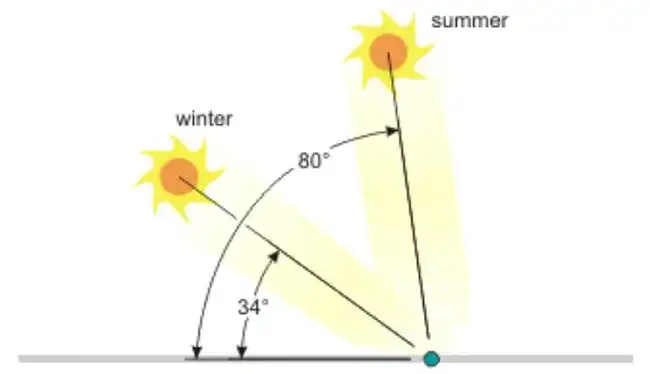
To account for these seasonal variations, some homes utilize dual-axis solar trackers with motors and programming to automatically adjust panel angles day-to-day and season-to-season. However, trackers add complexity and cost.
Most installers position fixed solar arrays at the angle yielding best year-round average production. While increased winter tilt loses some summer efficiency, and vice versa, the trade-off optimizes net energy yield.
So consider seasonal sun paths when planning panels. But unless prioritizing winter solar or summer peak loads, let reputable solar pros determine the sweet-spot tilt for maximizing annual solar capture based on latitude, climate and daylight hours.
Does Your Roof Have the Right Position for Solar Panels?
Before installing photovoltaic solar panels, it’s important to assess the sunlight available at your location with a professional site survey. Skilled solar integrators will evaluate the viability for your home to utilize solar energy.
During a site analysis, solar experts will study the positioning of your roof and any potential sources of shading from nearby trees or structures. They will use specialized tools to model the solar azimuth and amount of direct sun exposure across seasons based on roof direction and angle.
Understanding existing zoning regulations is also key when surveying a site for solar suitability. Following local codes and policies ensures the aesthetic visual appeal of planned installations.
Once solar specialists complete an on-site sunlight and feasibility analysis, they can determine what size PV system your location can support. And provide custom recommendations for equipment like fixed or tracking panel mounts optimized for maximum clean energy production.
So don’t leave solar power potential to chance. Consult highly experienced installers offering comprehensive site evaluations as a first step to efficiently harnessing the sun’s renewable energy.
How Solar Panel Direction Influences Energy Output?
The direction solar panels face has a significant impact on the amount of sunlight that reaches the panels and hence how much electricity they can generate over the course of each day and year.
Panels facing true south (in the northern hemisphere) or true north (in the southern hemisphere) tend to produce the highest net energy yield annually. This directional alignment allows for maximum exposure as the sun tracks across the sky east to west each day, and shifts north to south between summer and winter seasons.
Panels facing partly east or west can still capture substantial solar energy during morning and afternoon hours when the sun angles from those directions. However, energy output diminishes in the middle of the day when sunlight strikes the array diagonally instead of perpendicularly. Total daily and annual production will decrease.
To summarize the key takeaways:
- Solar panels pointed true south achieve 100% of potential energy production
- Panels facing southwest or southeast see an 8% output loss
- East or west alignment leads to 15% less production
- North-facing panels generate 30% lower yield
This makes it clear that being able to orient photovoltaic arrays precisely south (north in southern hemisphere) ensures maximum irradiation and conversion efficiency over the life of the system. Even marginally suboptimal alignment towards east or west that still captures significant sunlight sees noticeable degradation that adds up over decades. And incorrect north orientation causes drastically lower performance.
In contrast, solar arrays positioned perpendicular to the sun’s daily east-west path receive the most constant irradiance at solar noon when intensity peaks. Plus have extended morning and afternoon collection times as the sunlight remains aligned to panels on those azimuth angles.
Other key factors like geographic latitude, local climate patterns, terrain shading and panel tilt also influence productivity. But optimizing true north/south alignment maximizes solar absorption year-round for most PV installations. Carefully planning directionality helps homeowners and commercial owners get the greatest return from solar investments while generating ample emissions-free electricity.
People Also Ask (PAA)
Do solar panels work on cloudy days or in the shade?
– Solar panels can still generate electricity on cloudy days, but at reduced efficiency. Too much shading will drastically cut solar panel productivity.
How often should I adjust my solar panel direction and tilt?
– For fixed mounts, the direction and tilt is set once based on site conditions and latitude. Trackers automatically adjust daily or seasonally.
Can I adjust direction for winter vs summer sun paths?
– Manual seasonal tilt adjustments are possible but rarely worth the effort vs proper initial positioning. Dual-axis trackers automatically track seasonal movement.
What direction should solar panels face in equatorial regions?
– At the equator, the sun is nearly perfectly north/south over each year so north/south orientation is preferred.
What role does solar panel tilt play in optimizing energy production?
– Solar panel tilt is crucial. For optimal results, set the tilt angle based on your location’s latitude—around 30 degrees for a latitude of 30 degrees.
Can solar panels face different directions on the same installation?
– Yes, it’s possible. Considerations such as split-orientation setups can help balance energy production throughout the day.
How does seasonal variation impact the direction solar panels should face?
– Seasonal adjustments matter. Tilting panels to steeper angles in winter captures low-angle sunlight, while a shallower angle in summer optimizes exposure to higher-angled sunlight.
Is there a benefit to having solar panels face slightly away from the best direction?
– Indeed. Adjusting the orientation, like facing them southwest, can extend energy production into the late afternoon.
What should I do if my roof’s orientation isn’t ideal for solar panels?
– Don’t worry. Explore alternatives like solar carports or ground-mounted panels, ensuring south-facing panels for optimal electricity production.
Final Thoughts
The optimal solar panel direction and tilt depends primarily on geographic location and sun path, while avoiding obstructions that could cause shading. Tracking mounts can help maximize productivity but proper fixed positioning also enables solid returns. Conduct solar studies using tools for your site based on latitude, typical weather and shading before committing to equipment positioning and investments. With proper solar panel direction and seasonal tilt adjustments, you can maximize solar energy production.

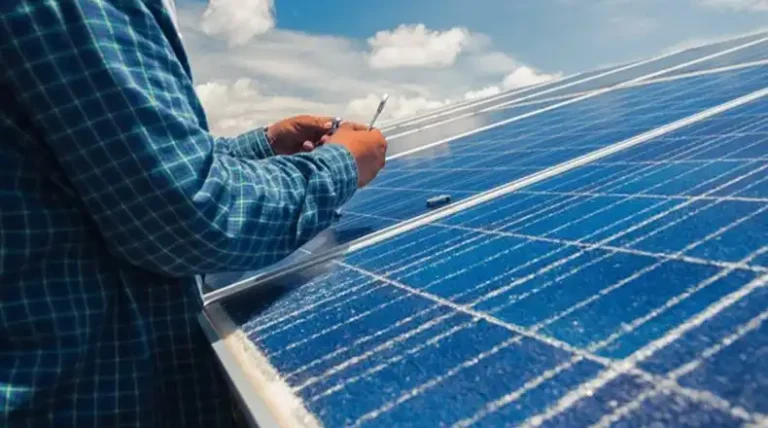
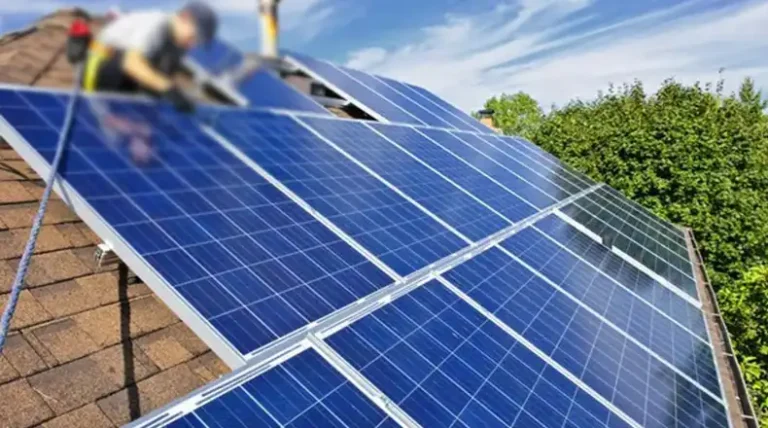


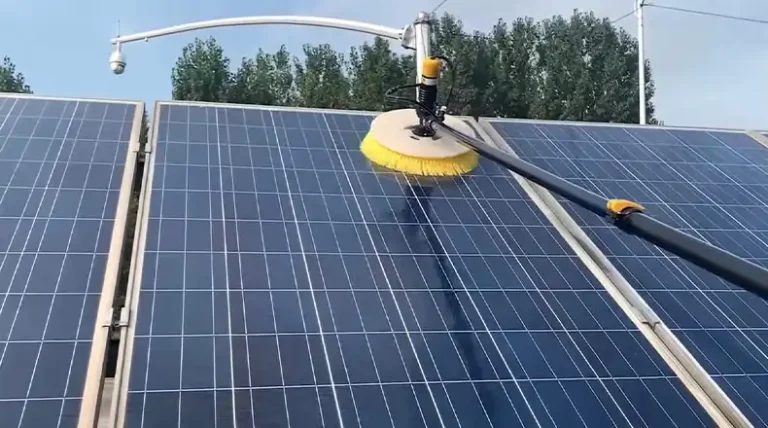
![Can a Broken Solar Panel Still Work? [Answerd]](https://www.itekenergy.com/wp-content/uploads/2024/05/Can-a-Broken-Solar-Panel-Still-Work-768x428.webp)
